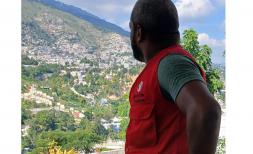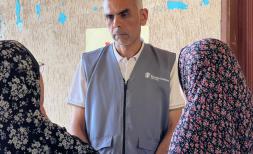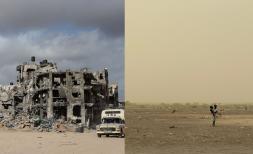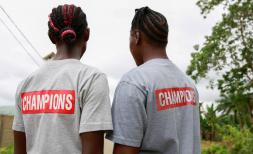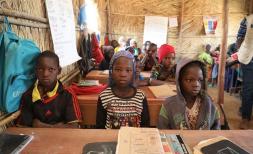Learning from Promising Practices in Refugee Education
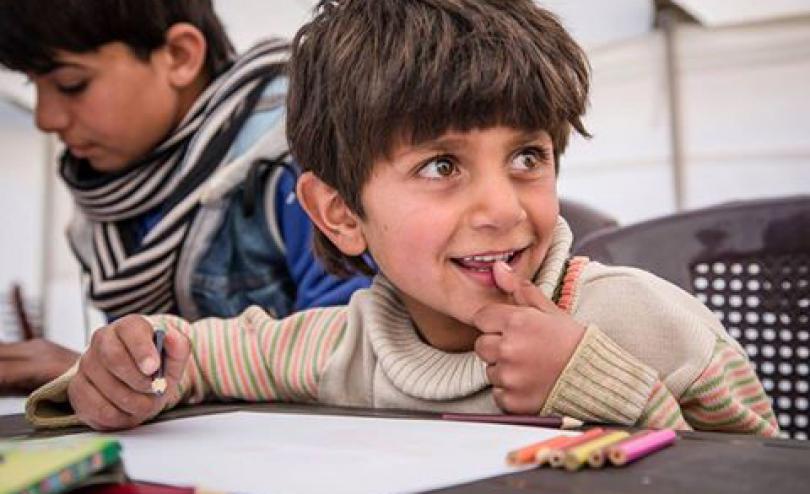
Originally published on GEM Report.
Earlier this year Save the Children, Pearson and UNHCR formed a new groundbreaking partnership to tackle the refugee education crisis. The Promising Practices in Refugee Education initiative sets out to identify, document and promote innovative ways to effectively provide quality education to refugee children and young people.
Why this initiative?
The world is witnessing record-high levels of human displacement. Over 65 million people have been forced from their homes, including 22.5 million who have crossed an international border to flee persecution and reach safety.
In times of crisis, education provides hope and a place of safety, and reduces the risk of child marriage, child labour, and children being recruitment by armed groups. Refugee families prioritise education, as they know it is a passport to a more fruitful future for their children.
However, the barriers to accessing quality education remain challenging and varied. Shockingly, refugee children are five times more likely to be out of school than non-refugee children. Only 61% have access to primary education, and only 23% have access to secondary school.
Encouragingly, there is cause for optimism: numerous projects are reaching refugees in some of the most difficult regions and providing innovative interventions to the education challenge with promising results.
That is why Save the Children, Pearson and UNHCR are collaborating to increase awareness of the important work happening in the sector and to demonstrate the diverse ways in which organisations are providing quality education for refugees.

Shining a light on promising practices
A competitive selection process led to twenty promising practices being documented as case studies, which can be found here. The case studies chosen cover programmes in fifteen countries, range from early childhood through secondary education, and include a variety of intervention types.
Recommendations for policy-makers & practitioners
The key findings and lessons learned from the case studies were synthesised in this report and launched at the UN General Assembly. The programmes and the experiences of implementing partners were used to identify ten recommendations grouped under three overarching pillars, aimed at improving refugee education policy and practice.
Approach the immediate crisis with a long-term perspective
- Strengthen inclusive national systems
- Commit to predictable multi-year funding for education programming and research in refugee responses
- Improve collaboration and develop innovative partnerships
Understand different contexts and meet distinct needs
- Adopt user-centred design and empowering approaches
- Establish diverse pathways that meet distinct needs
- Use space and infrastructure creatively
Improve outcomes for all
- Support teachers to help ensure quality
- Prioritise both learning and well-being
- Use technology as an enabling tool in pursuit of education outcomes
- Build a robust evidence base
Three of these recommendations are highlighted below.

The need for multi-year funding
The majority of refugee education interventions rely on funding from the woefully underfunded humanitarian system, which uses annual not multi-year funding arrangements. In 2016, education received only 2.7% of humanitarian funding, as a recent policy paper by the Global Education Monitoring Report showed.
Many case studies demonstrated the vital importance of multi-year funding for quality education programmes during protracted refugee crises. In most contexts, refugee education receives little or no national education budget allocation, unless a specific refugee education plan is put in place. As a result, education for refugees falls in the gaps between different funding mechanisms, making planning and service delivery on a medium to long-term basis impossible.
The United Nations Relief and Works Agency for Palestine Refugees in the Near East (UNRWA) explained in their case study that it faces severe financial constraints, despite delivering education to Palestine refugees in Syria under huge security and infrastructure constraints. In the 2015/16 school year, UNWRA nearly had to close its schools due to a lack of funding, while the unpredictability of financing makes it difficult to plan for learners’ needs in the future.
Establish diverse pathways that meet distinct needs
Displaced children may need additional assistance beyond just a place in a classroom, including language support, remedial education and curriculum catch up, psychosocial support, and life skills to be able to thrive in a new, unfamiliar environment.
The World University Service of Canada’s (WUSC) programme is designed to provide greater support to vulnerable girls through remedial education. WUSC’s promising practice is proven to increase girls’ learning outcomes, reduce dropout rates and boost the likelihood of girls entering secondary school. Other examples were the Caritas Switzerland Essence of Learning programme in Gaza and the Mercy Corps’ LEARN programme in Turkey.

Support teachers to help ensure quality
Teachers are the most important school-based factor in determining the quality of education, yet in crisis contexts and refugee settings teachers are working in extremely challenging environments with minimal support, training, supervision, materials or pay.
The Teachers for Teachers programme in Kakuma Refugee Camp, Kenya, provides an innovative professional development initiative for teachers in the camp that includes teacher training, peer coaching, and mobile mentoring. Evidence shows that this model not only improves teaching practice and learning outcomes, but also fosters a protective and constructive learning environment, bolstering teachers’ confidence and their motivation to remain teaching.
Innovation in education for refugees
The Promising Practices in Refugee Education initiative demonstrates that while there are significant barriers to overcome, there are many innovative solutions that show immense potential and deserve to be replicated and scaled up. While there are no silver bullets, with combined political will, funding and policy change, this documentation offers a bigger set of tools, inspiring stories and practical ideas that will, if implemented, help get more refugee children into education and learning.
- Watch a short video about the initiative
- View the Promising Practices blog series
- Read all the case studies and the Synthesis Report
The 2019 Global Education Monitoring Report will focus on migration, to share your views on migration and education and help us develop the content for our forthcoming report click here.
